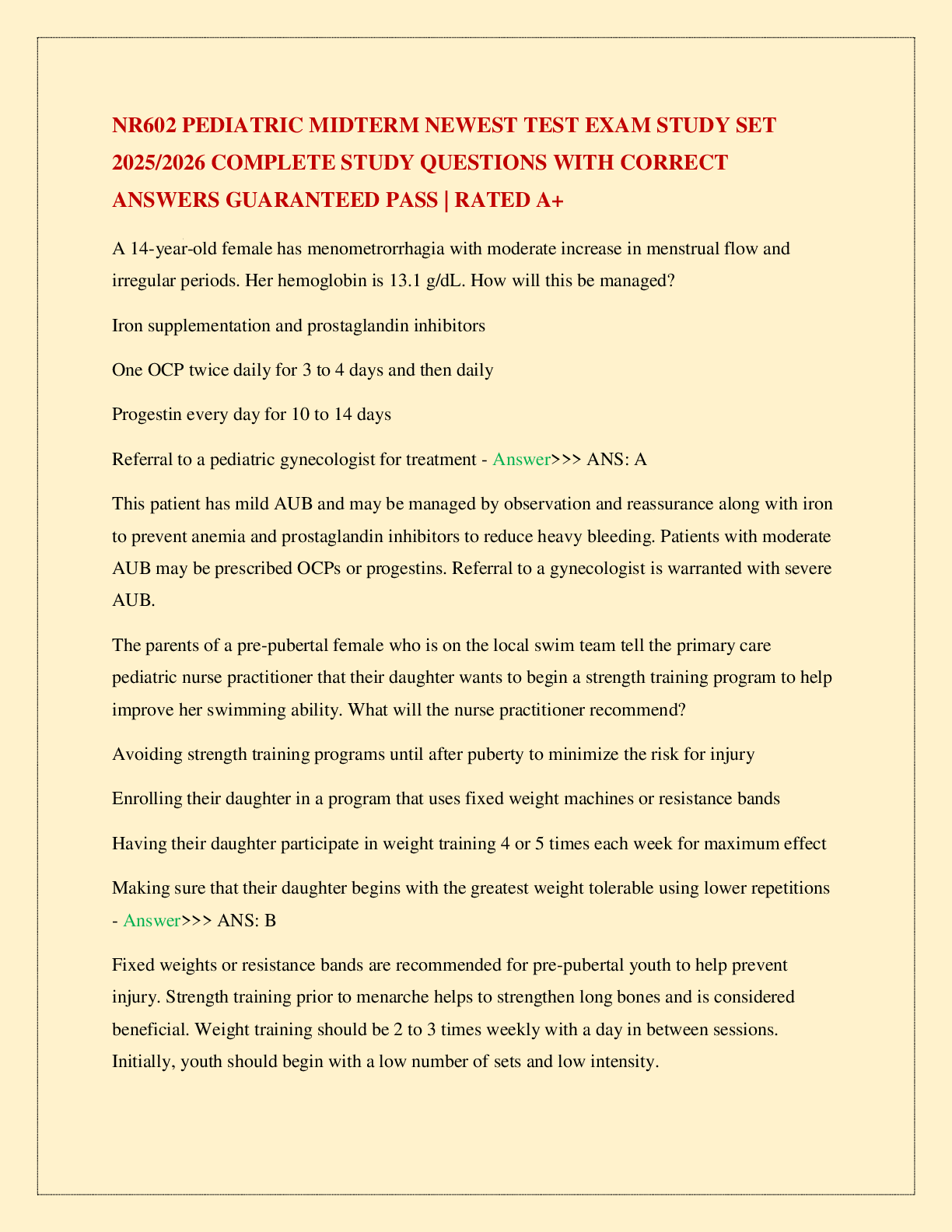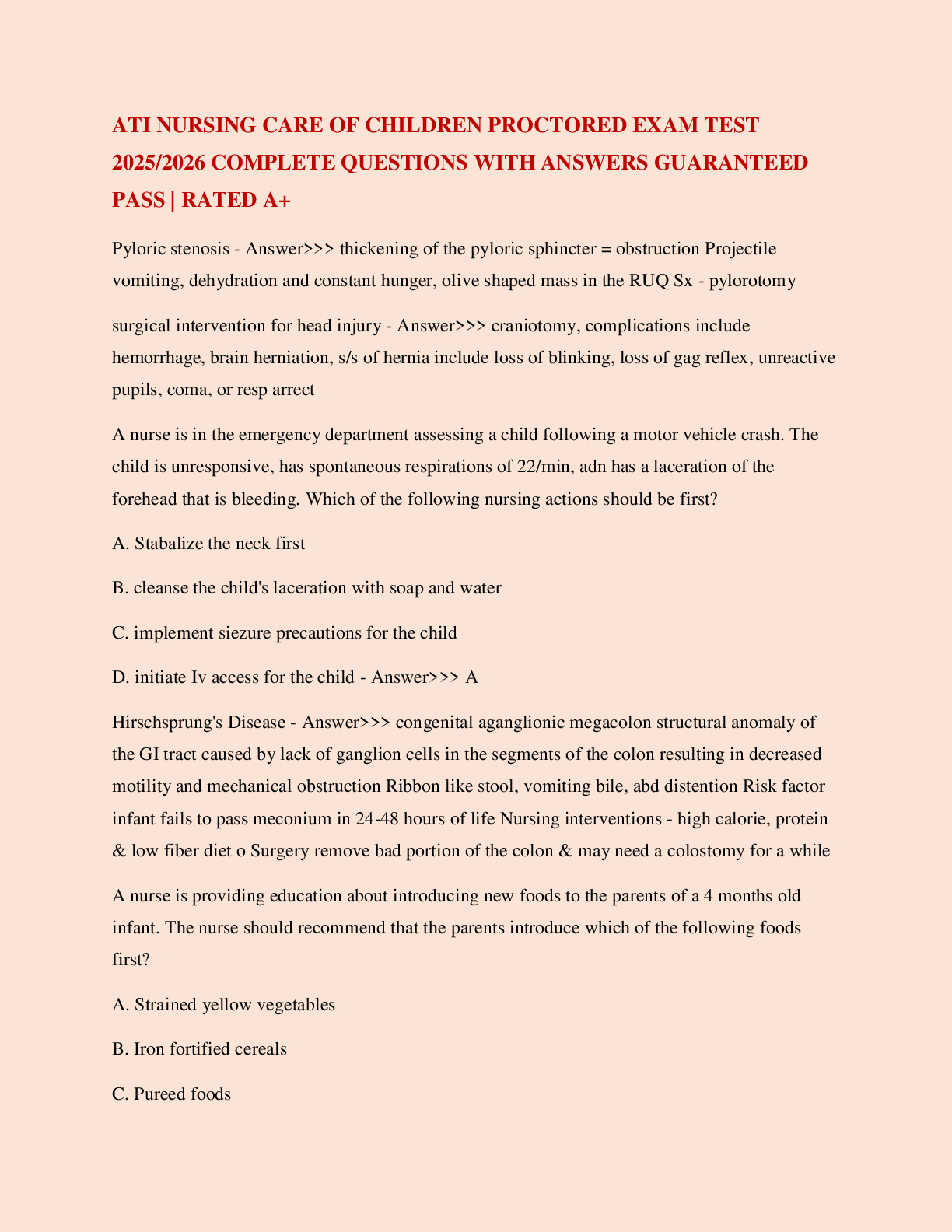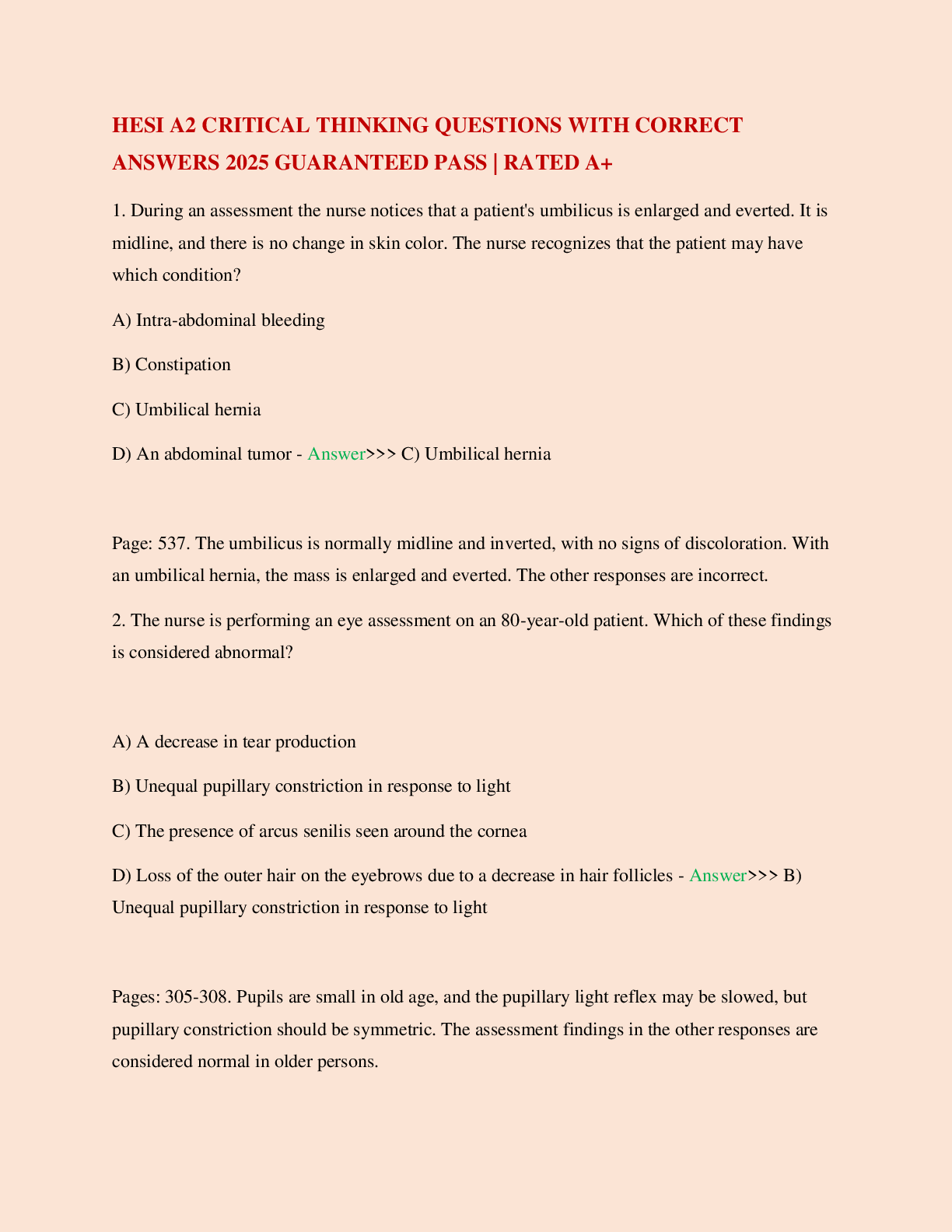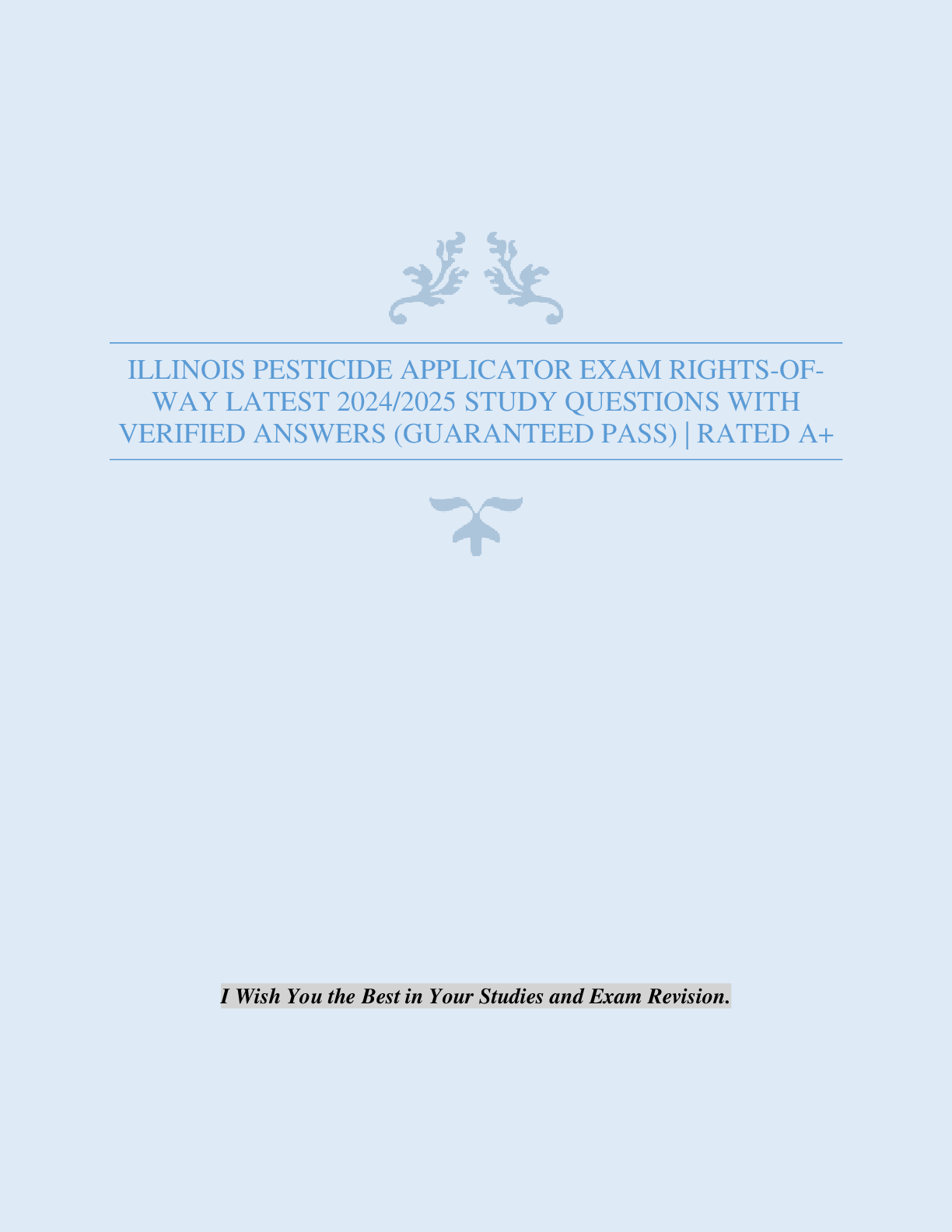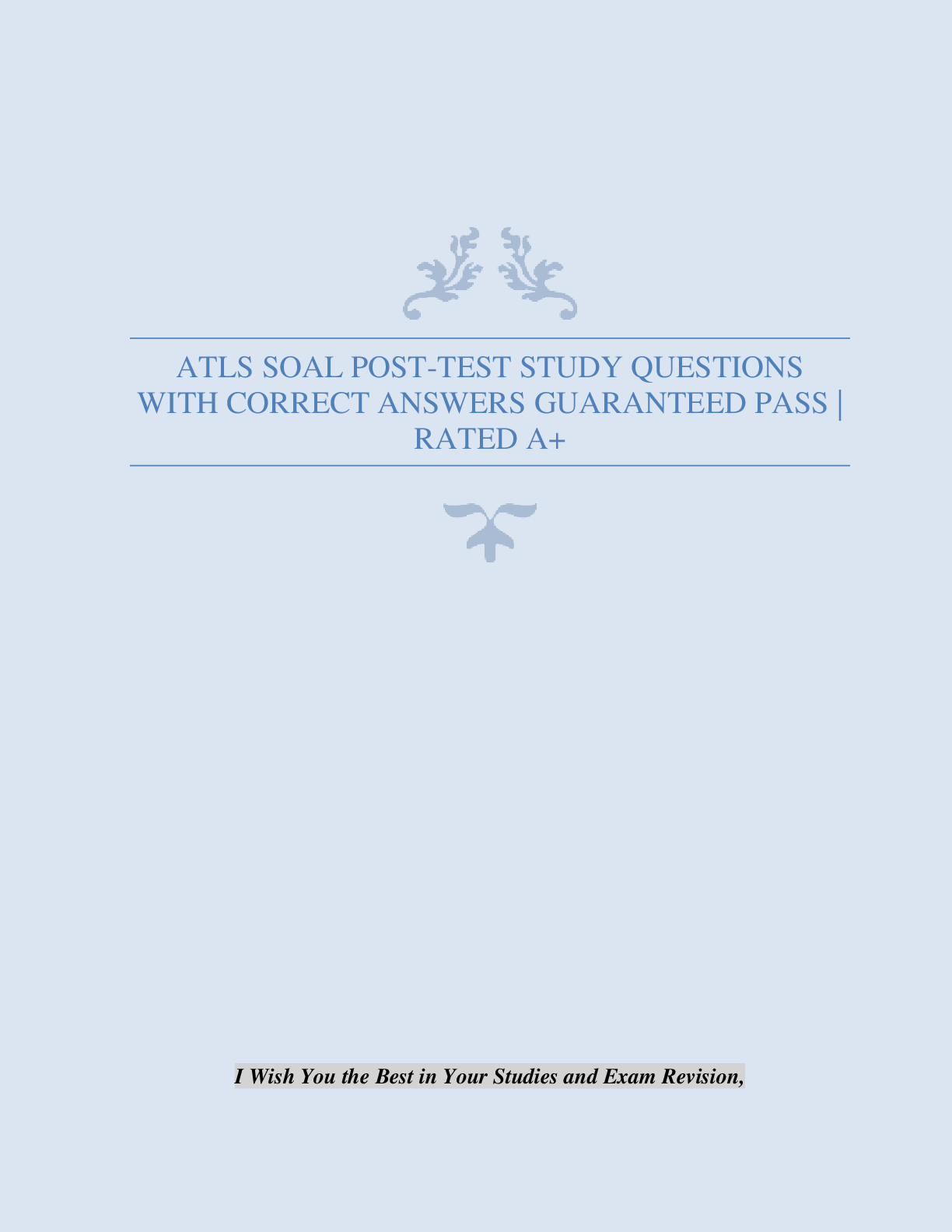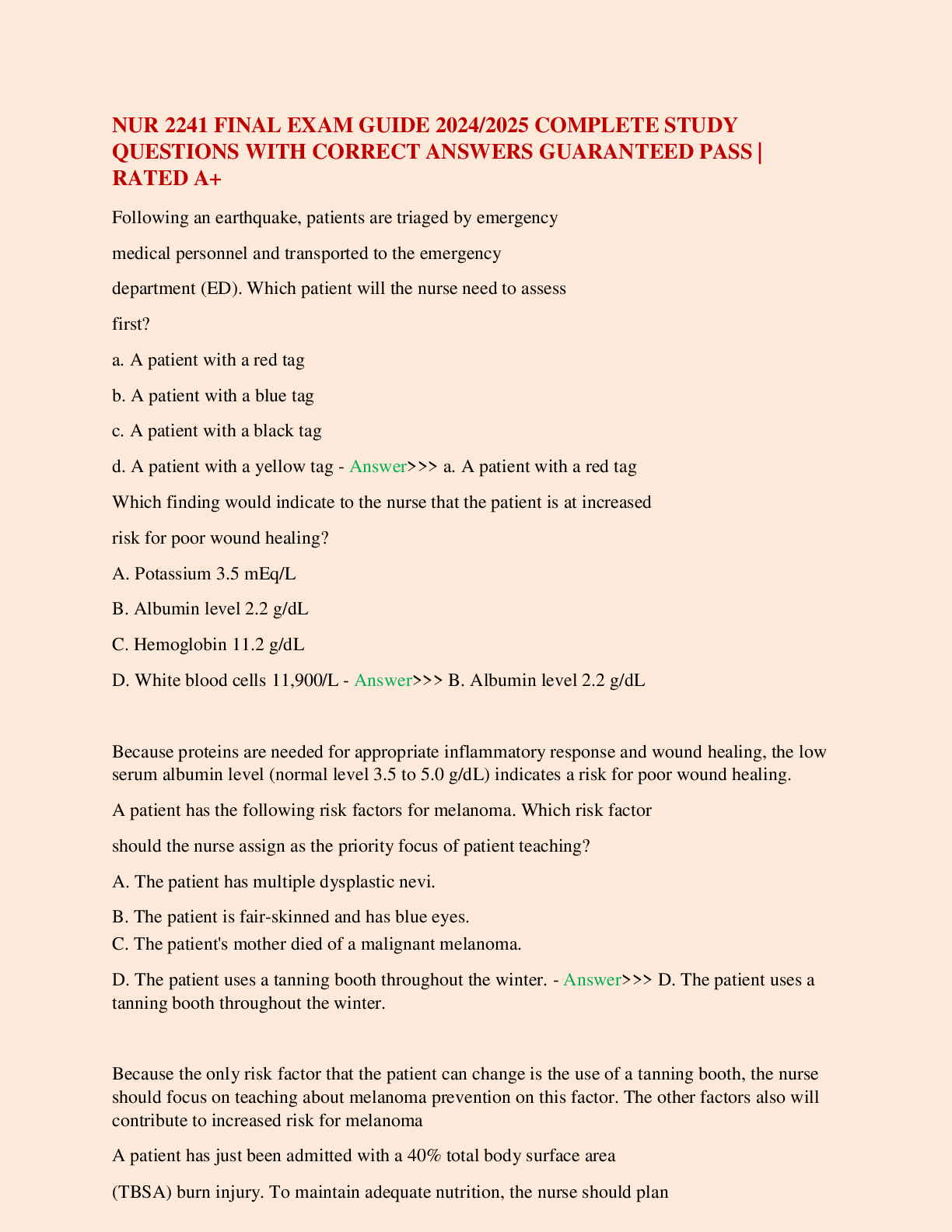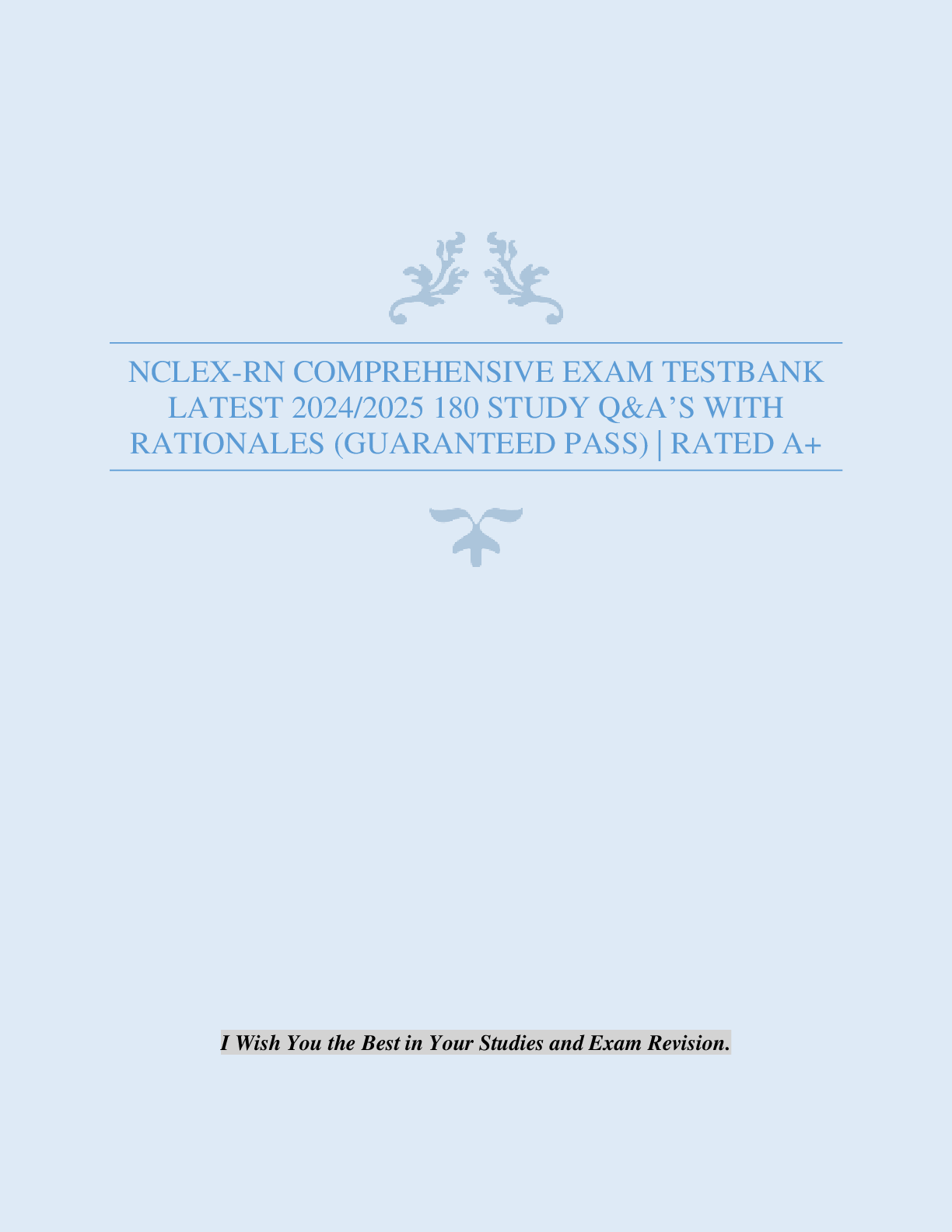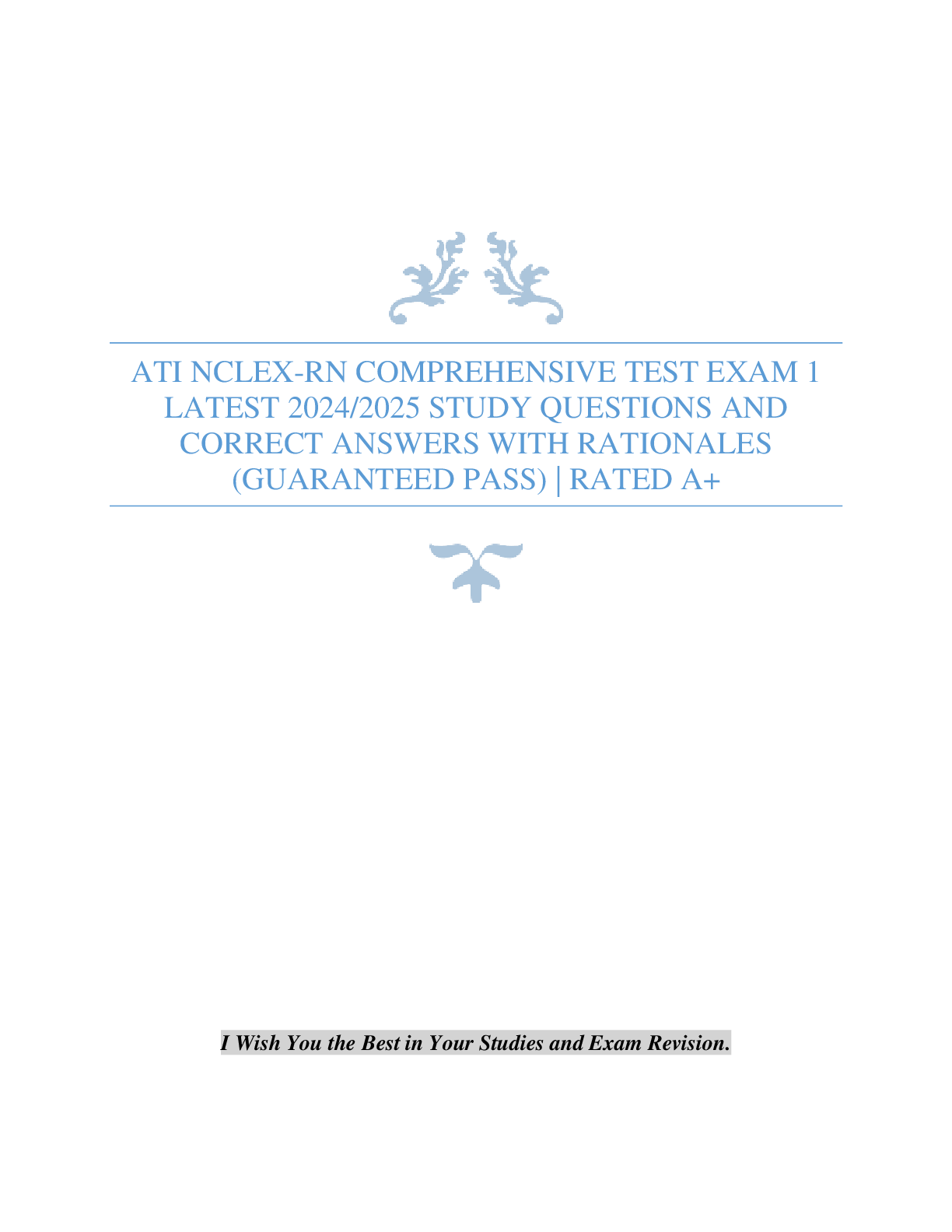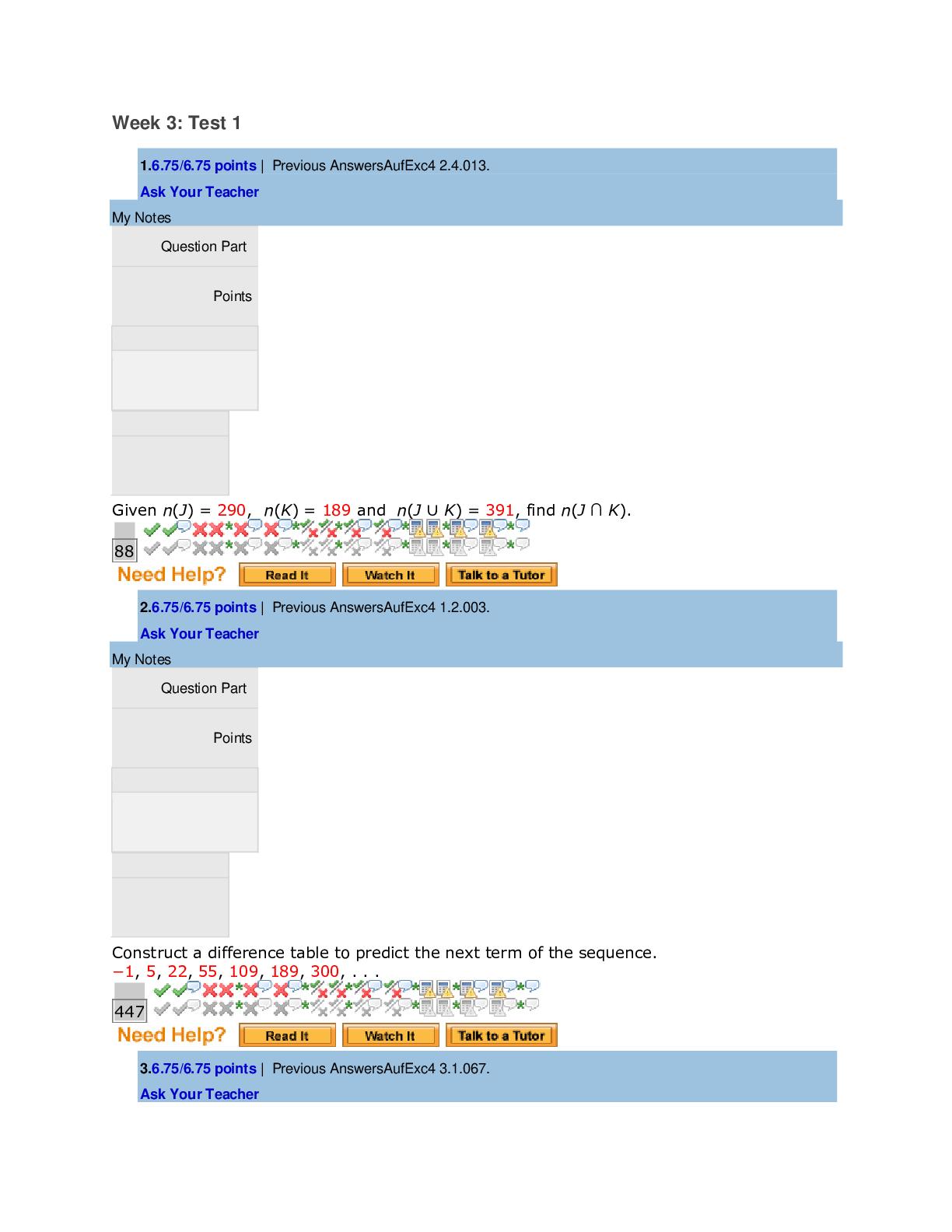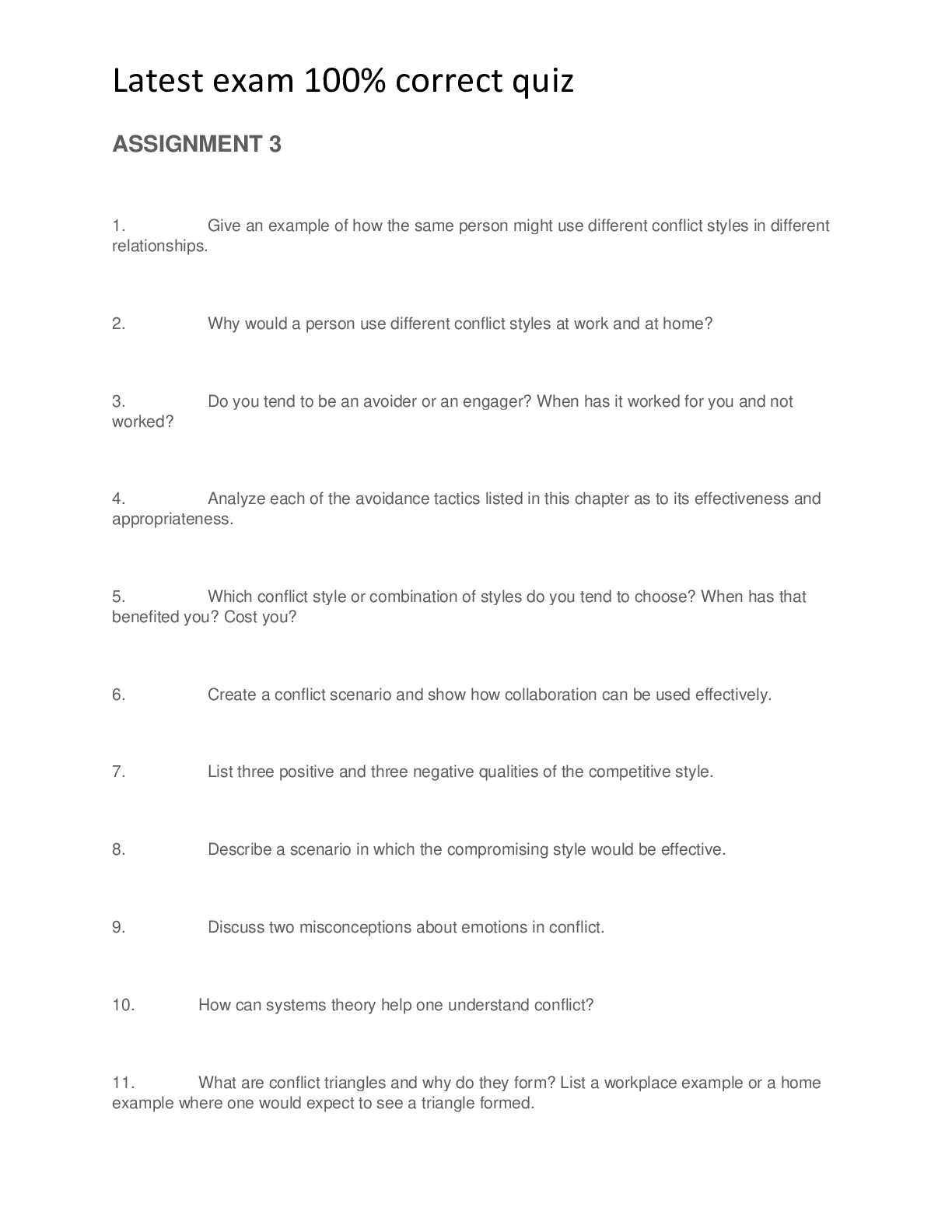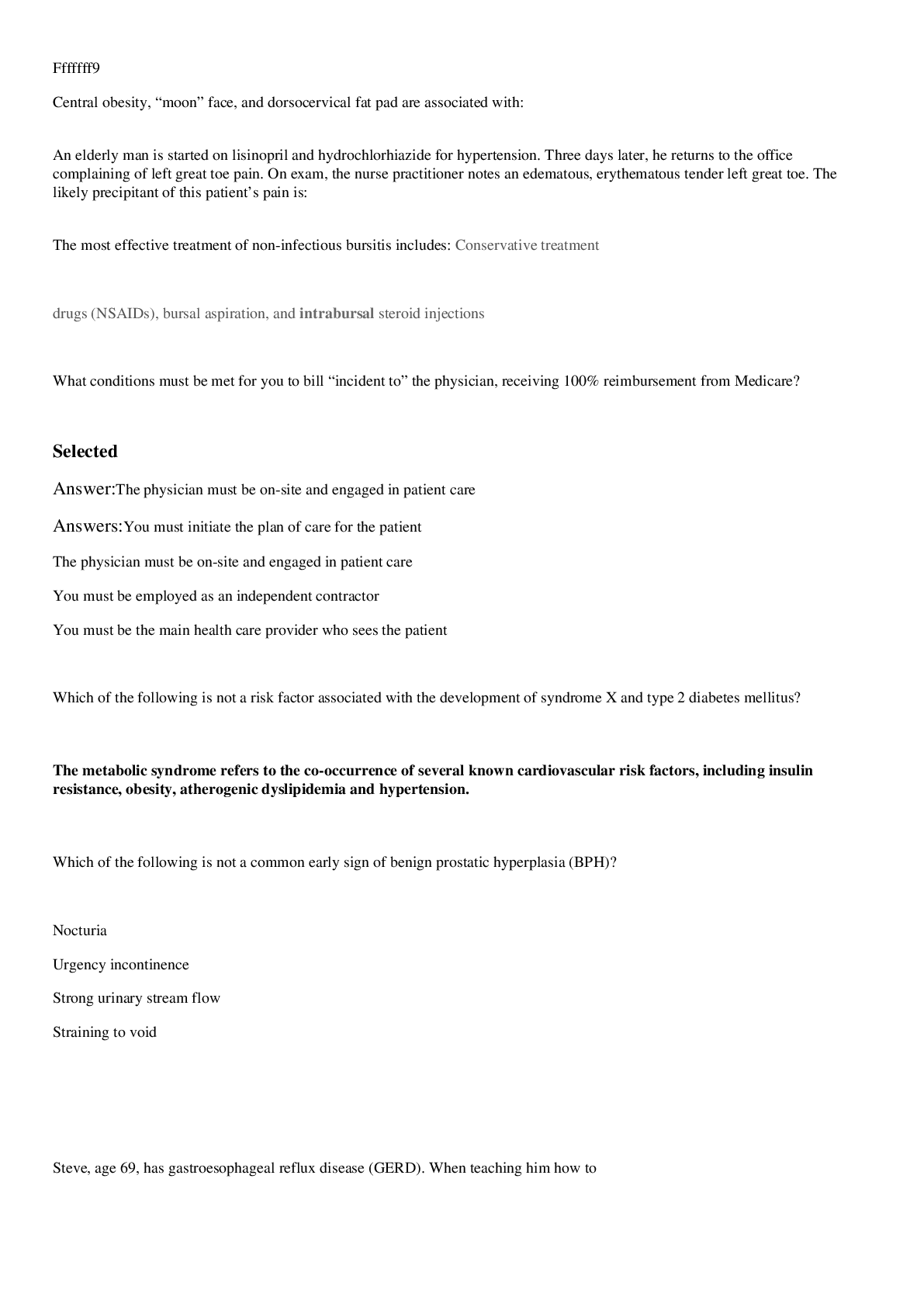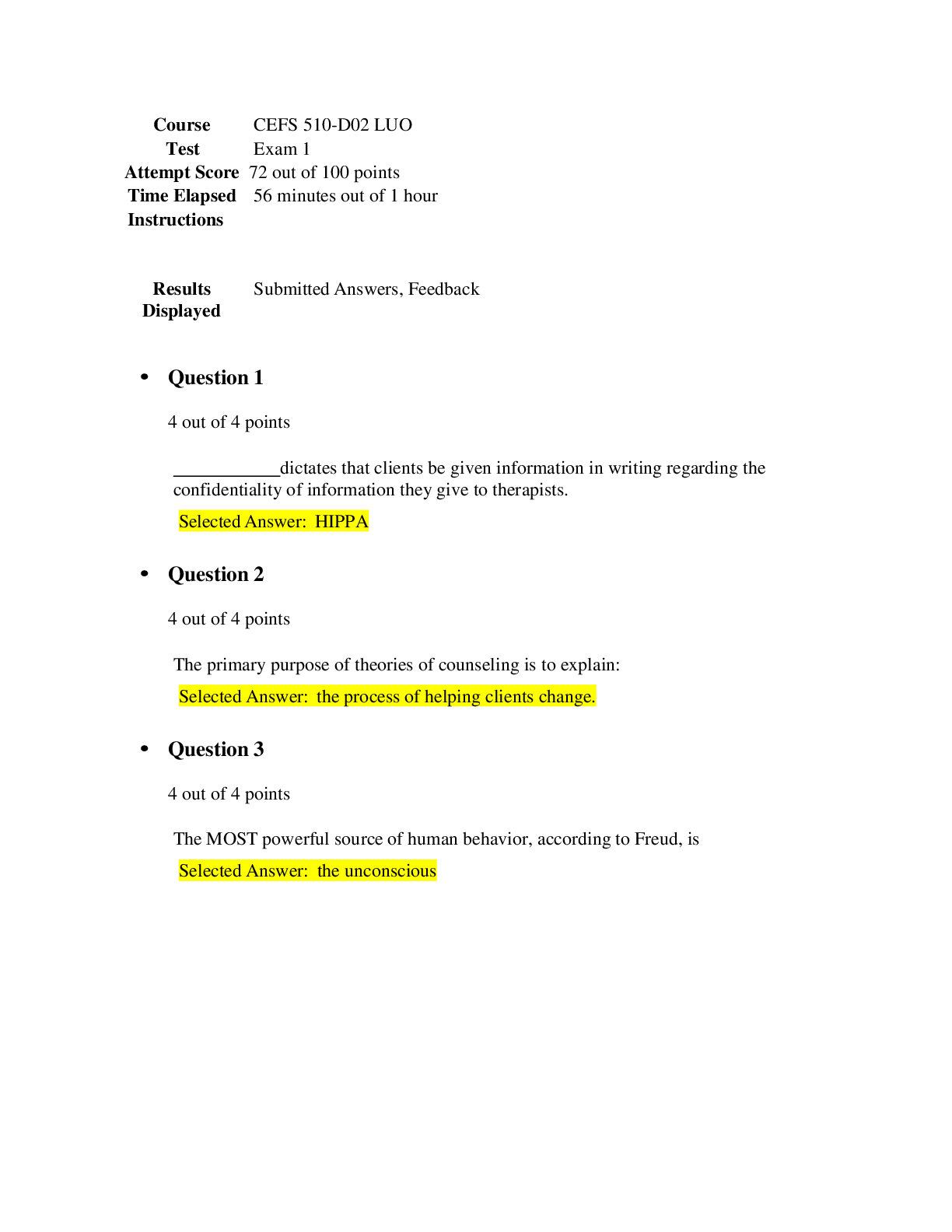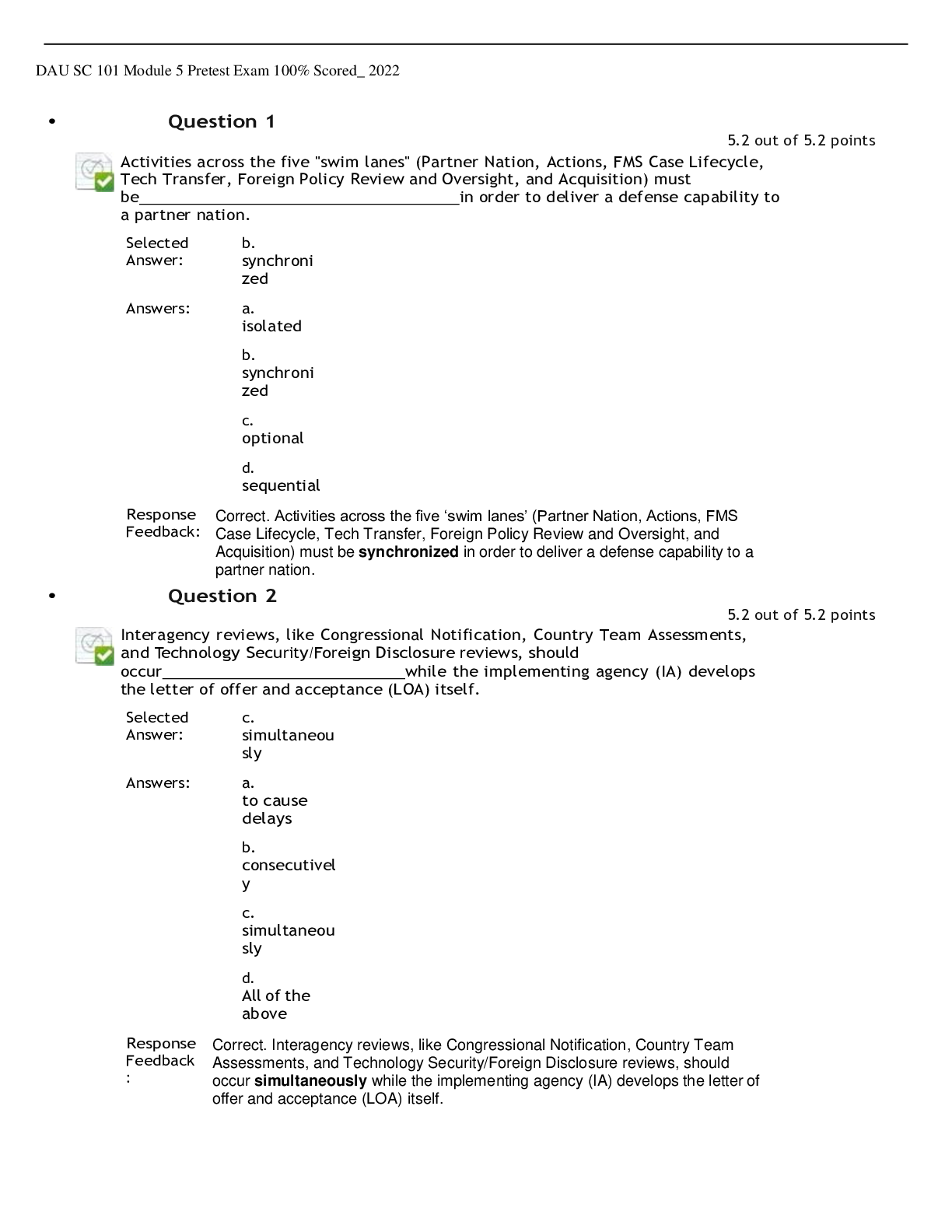nursing care > EXAM > NUR 425 TEST EXAM 1 LATEST STUDY QUESTIONS WITH CORRECT DETAILED ANSWERS GUARANTEED PASS NEWEST UPDA (All)
NUR 425 TEST EXAM 1 LATEST STUDY QUESTIONS WITH CORRECT DETAILED ANSWERS GUARANTEED PASS NEWEST UPDATE | RATED A+
Document Content and Description Below
You are caring for an intubated patient in the intensive care unit. The patient is awake but groggy from the sedation. To assess for pain, which of the following techniques performed by the nurse woul... d be inappropriate for this situation? a. The nurse asks the patient, "Are you in pain?" b. The nurse uses the CPOT scale or BPS tool. c. The nurse ignores the patient's vital signs because it is not a definitive indicator that the patient is in pain. d. The nurse checks the patients' glucose levels and if their pupils are dilated. - Answer>>> C (C is incorrect because when a patient is in pain, their vital signs can certainly be elevated. The nurse should use this as an indicator for pain, but the nurse should always reassess further to determine if there is another cause for the vital sign elevation. Using the Critical Care Pain Observation Tool or Behavior Pain Scale is appropriate to assess pain. Asking the patient if they are in pain is a yes or no question, so this is appropriate for a patient who in intubated and cannot speak. When a patient is in pain, their sympathetic nervous system activates, which can increase glucose levels, blood pressure, pulse, cause pupillary dilation, anxiety, goosebumps, and sweating.) What is the primary nursing intervention indicated for a symptomatic client with a PAWP of 3 mm Hg (low)? a. Restrict the client's fluids. b. Begin volume replacement. c. Administer diuretics to decrease preload. d. Decrease afterload. - Answer>>> B (A PAWP of 3 mm Hg reflects low left ventricular (LV) end-diastolic pressure and low preload to the left ventricle. The treatment for low preload is volume replacement.) This medication is used to increase the heart rate of a patient if they are experiencing bradycardic rhythms such as 2nd degree AV block type 1, 3rd degree heart block, junctional rhythm, and symptomatic sinus bradycardia - Answer>>> Atropine [Show More]
Last updated: 1 month ago
Preview 5 out of 51 pages

Loading document previews ...
Buy this document to get the full access instantly
Instant Download Access after purchase
Buy NowInstant download
We Accept:

Reviews( 0 )
$16.00
Can't find what you want? Try our AI powered Search
Document information
Connected school, study & course
About the document
Uploaded On
Jul 01, 2025
Number of pages
51
Written in
Additional information
This document has been written for:
Uploaded
Jul 01, 2025
Downloads
0
Views
9


